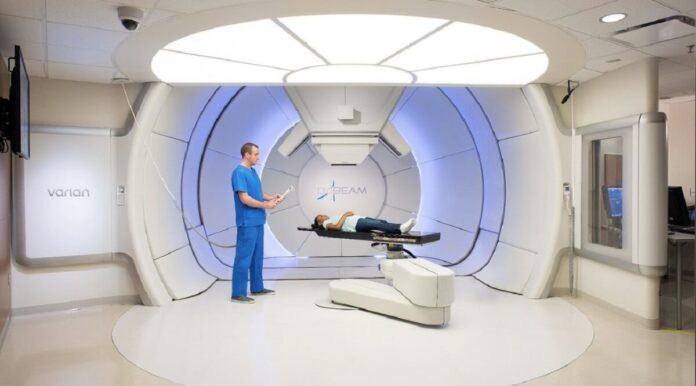Dealing with a cancer diagnosis can be a challenging journey, but advancements in medical technology have provided patients with a range of treatment options. Proton therapy, a cutting-edge form of radiation therapy, has gained prominence as an effective treatment for various types of cancer. If you or a loved one is considering proton cancer treatment, understanding what to expect during the process can help alleviate concerns and make the journey smoother. This article will take you through the key aspects of proton therapy, from the initial consultation to the treatment sessions and beyond.
The Initial Consultation
Your journey with proton therapy starts with an initial consultation with a radiation oncologist. During this crucial meeting, you’ll discuss your medical history, the type and stage of cancer you’re dealing with, and your overall health. This information helps the medical team determine if proton therapy is the right course for your case.
Treatment Planning, Personalized Treatment Approach
If proton therapy is deemed suitable for your condition, the next step is treatment planning. This process involves a series of diagnostic tests, such as CT and MRI scans, to map the tumor’s location and size precisely. This data creates a customized treatment plan tailored to your unique needs.
Simulation and Mask Fitting
A simulation and mask fitting session are conducted to ensure accuracy during proton therapy. You’ll be positioned on the treatment table like during your actual treatment sessions. A custom mask or mold is created to help you maintain the same position throughout the treatment, ensuring that the proton beams target the tumor with precision.
Proton Therapy Sessions
Proton therapy sessions typically span several weeks, with daily treatments scheduled Monday through Friday. Each session is relatively short, usually lasting only a few minutes. You’ll be asked to lie still on the treatment table, and the radiation therapy team will operate the proton therapy machine from a separate control room. The treatment itself is painless, and you won’t feel the proton beams as they target the cancerous cells.
Minimal Side Effects
One of the significant advantages of proton therapy is its ability to minimize damage to surrounding healthy tissues. Unlike traditional radiation therapy, which may affect nearby organs and tissues, proton therapy delivers its energy precisely to the tumor site, reducing the risk of side effects. As a result, many patients experience minimal discomfort during and after treatment.
Continued Monitoring
After completing your proton therapy sessions, your medical team will continue to monitor your progress through regular check-ups and imaging tests. This ongoing care is essential to ensure that the treatment has been successful and that there are no signs of cancer recurrence.
Returning to Normal Life
One of the advantages of proton therapy is its minimal impact on your daily life. Unlike some cancer treatments that can result in extended recovery periods, many patients can return to their normal routines shortly after completing proton therapy. This allows you to focus on your recovery and quality of life.
Conclusion: A Promising Path to Healing
In conclusion, proton therapy offers a promising path to healing for many cancer patients. Its precision and ability to minimize side effects make it an increasingly popular choice in cancer treatment. If you or a loved one is considering proton cancer treatment, you can expect a personalized treatment plan, short and painless treatment sessions, and minimal disruption to your daily life.
Read Also: Why Transparent Braces Are Teenagers’ Top Picks
Proton therapy represents a significant advancement in the fight against cancer, offering hope and healing to those facing this challenging journey. While the road may be challenging, knowing what to expect during proton therapy can provide comfort and confidence as you work toward a brighter, cancer-free future.







































